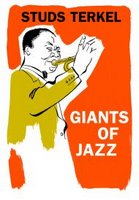
Giants of Jazz
By Studs Terkel
The New Press
1-5684-999-X
Now in tradepaperback
Like a Broadway revival, Studs Terkel’s Giants of Jazz, might be familiar to many, but its republication in tradepaper will be greeted as a welcome return. Terkel profiles thirteen true giants of American music. Though not exhaustive by any means, his sketches convey a good sense of the artists under discussion.
Using plain English Terkel effectively describes the complicated styles and complicated lives of his subjects. Of Charlie Parker he writes: “It has been said that Bird played the same songs but never, never, the same solos. That made it difficult, if not impossible for others to copy him, though he had scores of imitators.” (p. 171)
When describing Coltrane’s music, which so often defied words, Terkel nicely captures the essence of Trane’s art:“As he sailed up and down scales, playing individual notes, trying to sound them rapidly enough to make them simulate complete chords, he brought yet another dimension to the music called jazz.” (p. 175)
While much biographical detail has been left out, Terkel chooses fitting career highlights, as when he highlights Dizzy Gillespie’s role as a cultural ambassador on behalf of the U.S. State Department during the Cold War. Most observers agreed with Terkel’s assessment:
Dizzy Gillespie was a wonderful ambassador of goodwill. He and his music won over these people immediately.
“I have never seen these people let themselves go like this,” observed an American official at Damascus. He himself had been suspicious of jazz. (p. 165)
Throughout Giants of Jazz, Terkel writes with lightly elegiac touch, as many of his subjects had already exited the stage at the time of his writing. With line illustrations and French flaps, it is an attractive volume that will look good in anyone’s collection. When one actually reads Giants, Terkel’s knowledge and affection for those who create and perform jazz comes through crystal clear.